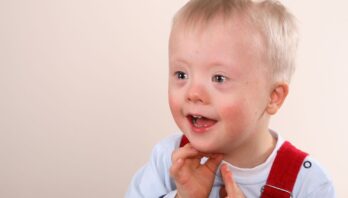When children experience abuse or other trauma, their behaviors and reactions to people and situations may change abruptly. Below are common symptoms of trauma, and responses that may help children and teens who are in distress.
When I notice withdrawal and isolation, what can I do?
Regularly offer choices about day-to-day activities, which can help children gain a sense of control.
Engage children in play or a sensory activity. Something as simple as blowing bubbles, listening to music, or drawing may make them calm enough to share what is happening.
Offer time and space. Let them know you are available when they are ready to engage.
Encourage regular social and recreational activities.
When I notice changes in overall behavior or in reactions to people or situations, what can I do?
Share your observations in a neutral way, and ask if they want to talk about it. Example: I’ve noticed when we pick you up from school, you’re angry. Is there something happening at school that is upsetting?
Talk without pushing for a response, whether or not the child can respond verbally to what you are saying.
Watch closely for signs of re-enactment of abuse. Examples include being abusive to other children, animals, or adults.
Talk to other people in the child’s life and see if they have noticed the same changes.
Follow up and report to Child Protective Services or the police if you have any concern about current abuse.
When I notice heightened fear, anxiety, and/or depression, what can I do?
Reassure the child that they are currently safe. Don’t hesitate to stop activities that are upsetting or traumatizing, and look into relationships that concern you.
Be predictable and consistent with schedules and caregivers.
Provide comfort. Different children are comforted by different things: emotional support, a movie, familiar foods, or a private space.
Offer creative options for children to express difficult feelings through art, music, dancing, writing, exercise, sports.
When I notice increased anger and aggression, what can I do?
Help children feel safe with themselves. When children or teenagers become angry or aggressive, a common instinct for adults is to try to control and contain the behavior. This approach often backfires. It’s more important to help children begin to feel safe when they feel out of control, which can help them regulate emotions.
Share anger warning signs and triggers. When adolescents and teens can identify the warning signs that their temper is starting to boil, it allows them to take steps to defuse the anger themselves before it gets out of control.
Avoid power struggles. Encourage children to take time or walk away when they become upset. Give space, soothe, and encourage.
Reduce sensory overload such as loud noises, bright lights, visual stimulation.
Keep calm. Adult stress can increase the child’s stress. Adult calmness, on the other hand, can help children reduce their own distress. Lower your voice, keep eye contact, and maintain relaxed and friendly body language.
Model effective use of anger. Make sure when you are angry that you express it appropriately and ask for what you want to change the situation.
Give adolescents and teens space to retreat. Don’t try to force the healing process.
(Adapted in part from Fallot, 2011; Harvey, 2012; Robinson & Segal)





